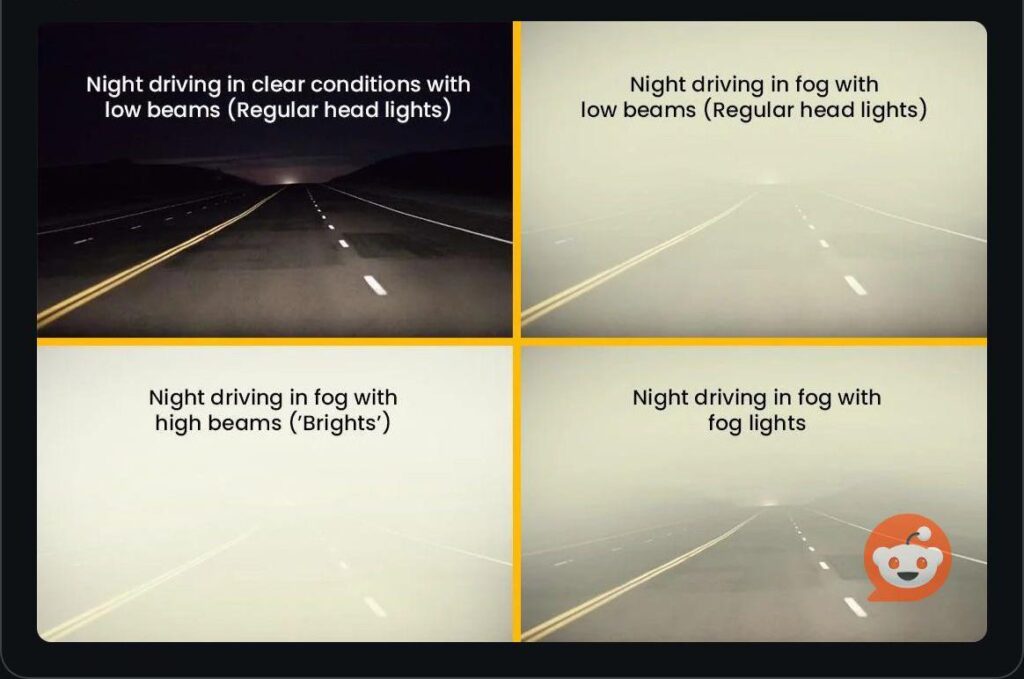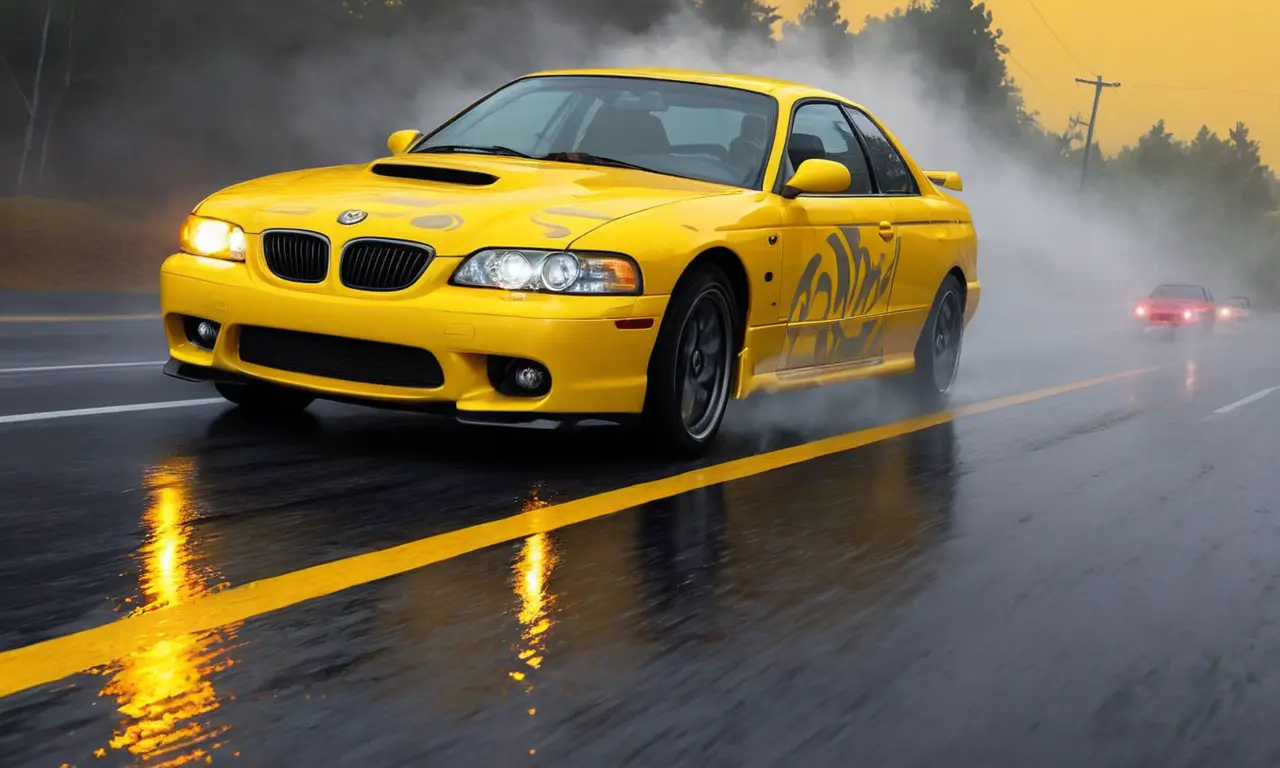
Driving through fog can be a nerve-wracking experience. Visibility is significantly reduced, making it challenging to see the road ahead and other vehicles. Proper lighting is crucial for navigating these conditions safely. While both fog lights and high beams are designed to illuminate the road, they function differently and should be used strategically. This article will delve into the distinctions between fog lights and high beams, explaining why fog lights with high beams shouldn’t be used simultaneously and outlining best practices for driving in foggy weather.
This article will explore the differences between fog lights and high beams, discuss the dangers of using high beams in fog, and provide essential safety tips for driving in low-visibility conditions.
Fog Lights vs High Beams
Fog lights and high beams serve distinct purposes and operate differently. Fog lights are specifically designed to illuminate the road ahead in foggy conditions. They emit a wide, diffused beam that cuts through the fog bank without creating excessive glare. This focused illumination helps drivers see obstacles and the road surface more clearly. In contrast, high beams project a narrow, intense beam of light that travels farther down the road. While effective for illuminating dark roads at night, high beams can be dangerous in foggy conditions because they reflect off the water droplets suspended in the air, creating blinding glare that reduces visibility for both the driver and oncoming traffic.
The key difference lies in the angle and intensity of the light beam. Fog lights are angled downwards and have a wider spread to illuminate the area directly in front of the vehicle, while high beams are angled upwards with a narrower beam to reach farther distances. This design difference is crucial because fog creates a scattering effect that intensifies glare from bright light sources.
Driving in Foggy Conditions

Driving in fog requires extra caution and vigilance. Reduced visibility increases the risk of accidents, so it’s essential to adjust your driving habits accordingly. Slow down significantly to allow for increased reaction time and maintain a safe following distance from other vehicles. Use your low beams whenever possible as they provide better illumination without causing glare. If you encounter heavy fog, consider pulling over to a safe location until visibility improves.
Remember that even with proper lighting, it’s crucial to drive defensively in foggy conditions. Be aware of your surroundings and anticipate potential hazards. Scan the road ahead for pedestrians, cyclists, and other vehicles. Use your mirrors frequently to check your blind spots and be prepared to brake or steer clear of any obstacles.
Fog Light Function
Fog lights are specifically engineered to combat the challenges posed by fog. They emit a yellow-tinted light that penetrates through the dense air better than white light. This color choice is based on the way our eyes perceive different wavelengths of light. Yellow light has a longer wavelength, which allows it to scatter less in foggy conditions.
Fog lights are typically mounted lower on the vehicle’s front bumper, directing the beam towards the ground and slightly outwards. This placement helps illuminate the road surface directly ahead while minimizing glare for oncoming drivers. The wide, diffused beam pattern created by fog lights effectively illuminates the area within a few feet of the vehicle, providing crucial visibility in dense fog.
Fog Light Placement
The optimal placement of fog lights is crucial for their effectiveness. They are typically mounted lower on the front bumper than headlights, aiming the light downwards and outwards. This positioning ensures that the beam illuminates the road surface directly ahead while minimizing glare for oncoming traffic.
High Beam Dangers in Fog

Using high beams in foggy conditions can be extremely dangerous. The intense, narrow beam of light reflects off the water droplets suspended in the fog, creating a blinding glare that significantly reduces visibility. This effect is known as “fog halo” and can make it nearly impossible to see the road ahead or other vehicles.
Driving with high beams on in fog not only impairs your own vision but also blinds oncoming drivers, increasing the risk of head-on collisions. It’s crucial to remember that high beams are designed for open roads with clear visibility, not for driving in foggy conditions.
Safety Precautions
When driving in foggy conditions, prioritize safety by following these precautions:
- Reduce your speed: Slow down significantly to allow for increased reaction time and maintain a safe following distance from other vehicles.
- Use low beams: Opt for low beams whenever possible as they provide better illumination without causing glare.
- Turn on fog lights: If equipped, activate your fog lights to enhance visibility in dense fog.
- Increase following distance: Maintain a greater following distance than usual to allow ample time to react to potential hazards.
- Be extra vigilant: Scan the road ahead frequently for pedestrians, cyclists, and other vehicles. Use your mirrors regularly to check blind spots.
- Pull over if necessary: If visibility becomes extremely poor, consider pulling over to a safe location until conditions improve.
Conclusion
Driving in fog requires careful attention and adherence to specific safety practices. Understanding the differences between fog lights and high beams is crucial for navigating these challenging conditions safely. While fog lights effectively illuminate the road ahead without causing glare, high beams can create blinding reflections that significantly reduce visibility. By following the recommended safety precautions and using appropriate lighting techniques, you can minimize risks and ensure a safer driving experience in foggy environments.
